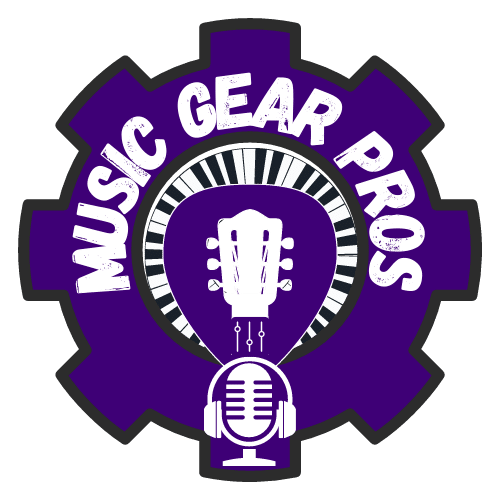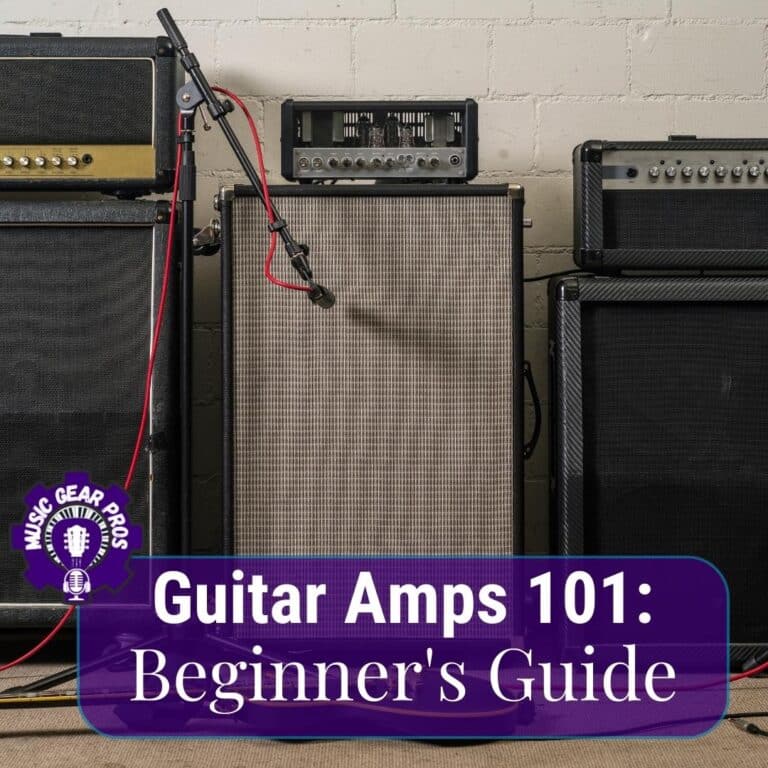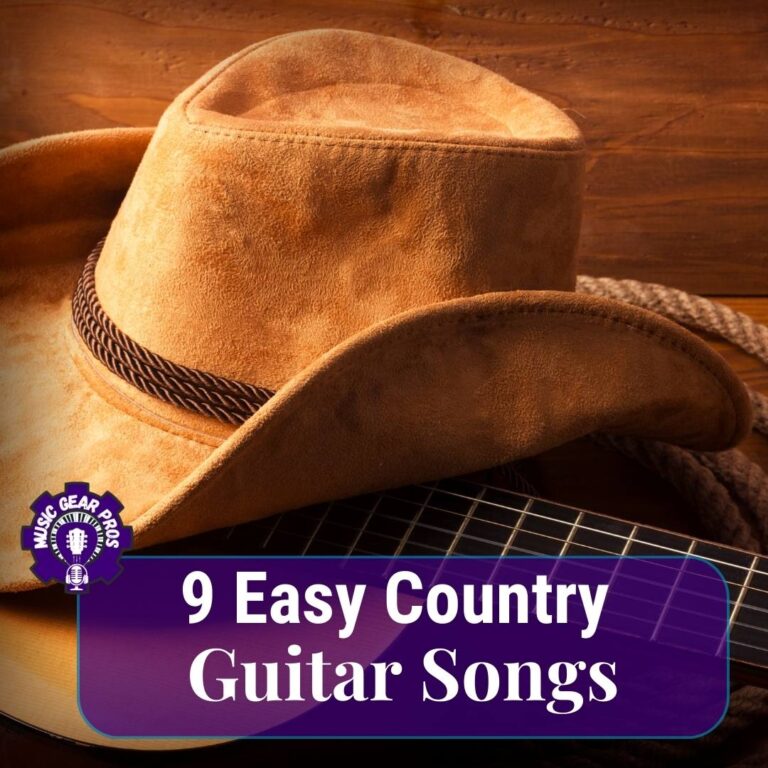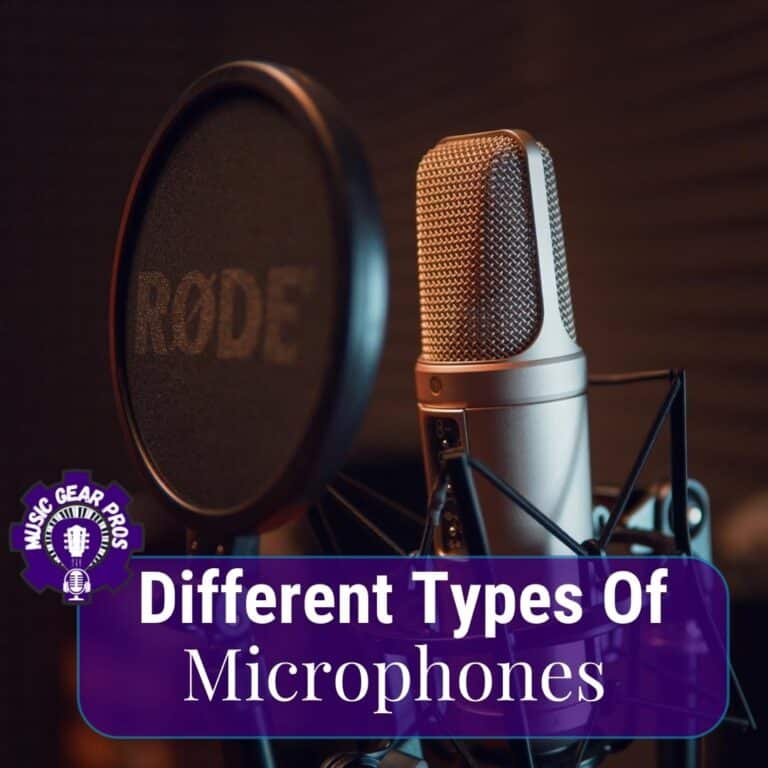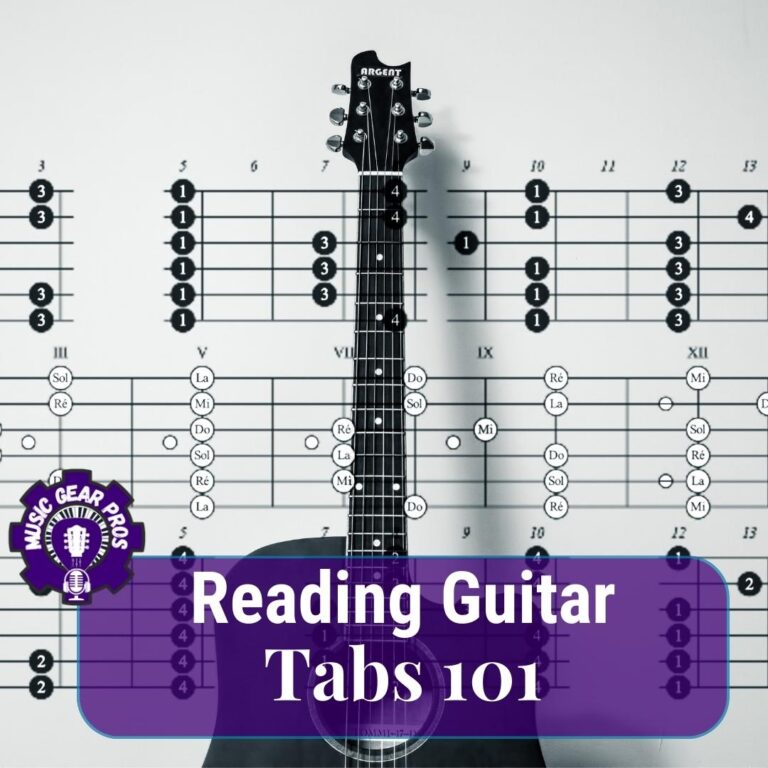Step on! Guide to the Different Types of Guitar Pedals
Curious about the world of guitar pedals? We’ve got you covered! Dive into our types of guitar pedals article to explore the colorful universe of overdrive, fuzz, delay, and more, and find the perfect pedal to elevate your guitar tone.
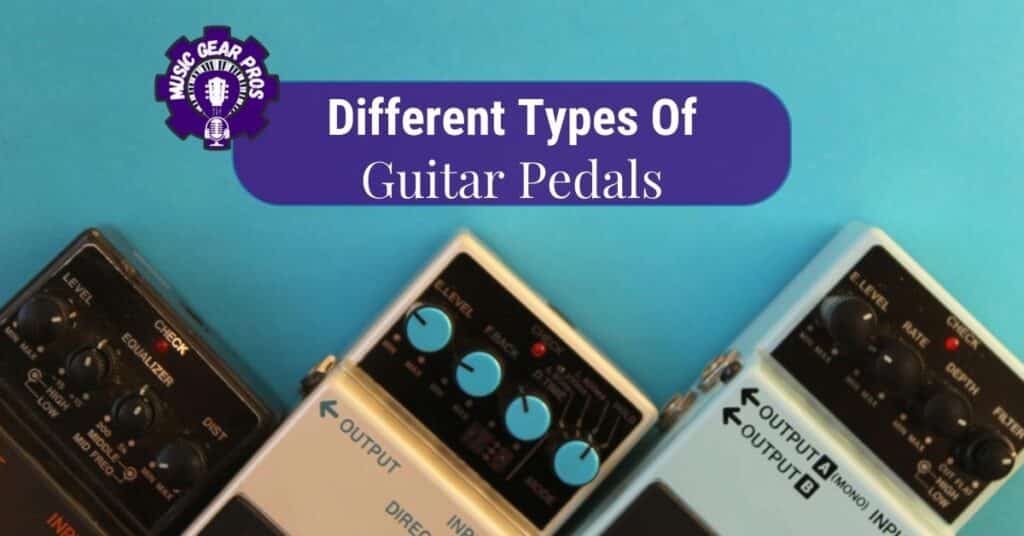
Overdrive, fuzz, delay…What?? Are you ready to explore the fascinating and sometimes confusing world of guitar pedals? If you’ve ever wondered what all those stompboxes can do for your sound, you’ve come to the right place! In this article, we’ll break down the most common types of guitar pedals, their characteristics, and their ideal applications.
Like some of our other articles, we made sure we kept it simple by answering What are they? And when to use it? By the end of our journey, you’ll have a better understanding of which pedal is the perfect fit for your pedalboard. So, let’s dive right in!
In a hurry? Here is A Sneak Peek at The Different Types of Guitar Pedals:
- Overdrive Pedals
- Emulate tube amp distortion
- Example: Ibanez Tube Screamer
- Distortion Pedals
- Create aggressive, hard-edged clipping
- Example: Boss DS-1
- Fuzz Pedals
- Deliver heavily saturated, synth-like tones
- Example: Electro-Harmonix Big Muff Pi
- Delay Pedals
- Create echoes and layers of guitar signal
- Example: Boss DD Series
- Reverb Pedals
- Simulate the sound of a room or hall
- Example: Electro-Harmonix Holy Grail
- Chorus Pedals
- Double and detune the guitar signal
- Example: Boss CE-2
- Phaser Pedals
- Create a sweeping, whooshing effect
- Example: MXR Phase 90
- Flanger Pedals
- Produce a swirling, jet-like swooshing effect
- Example: Electro-Harmonix Electric Mistress
- Tremolo Pedals
- Modulate the volume for a pulsating effect
- Example: Fender Tre-Verb
- Wah Pedals
- Create a vocal-like sweep with a foot-operated filter
- Example: Dunlop Cry Baby
- Compressor Pedals
- Control dynamics and even out volume
- Example: Keeley Compressor Plus
Let’s Explore The Types of Guitar Pedals
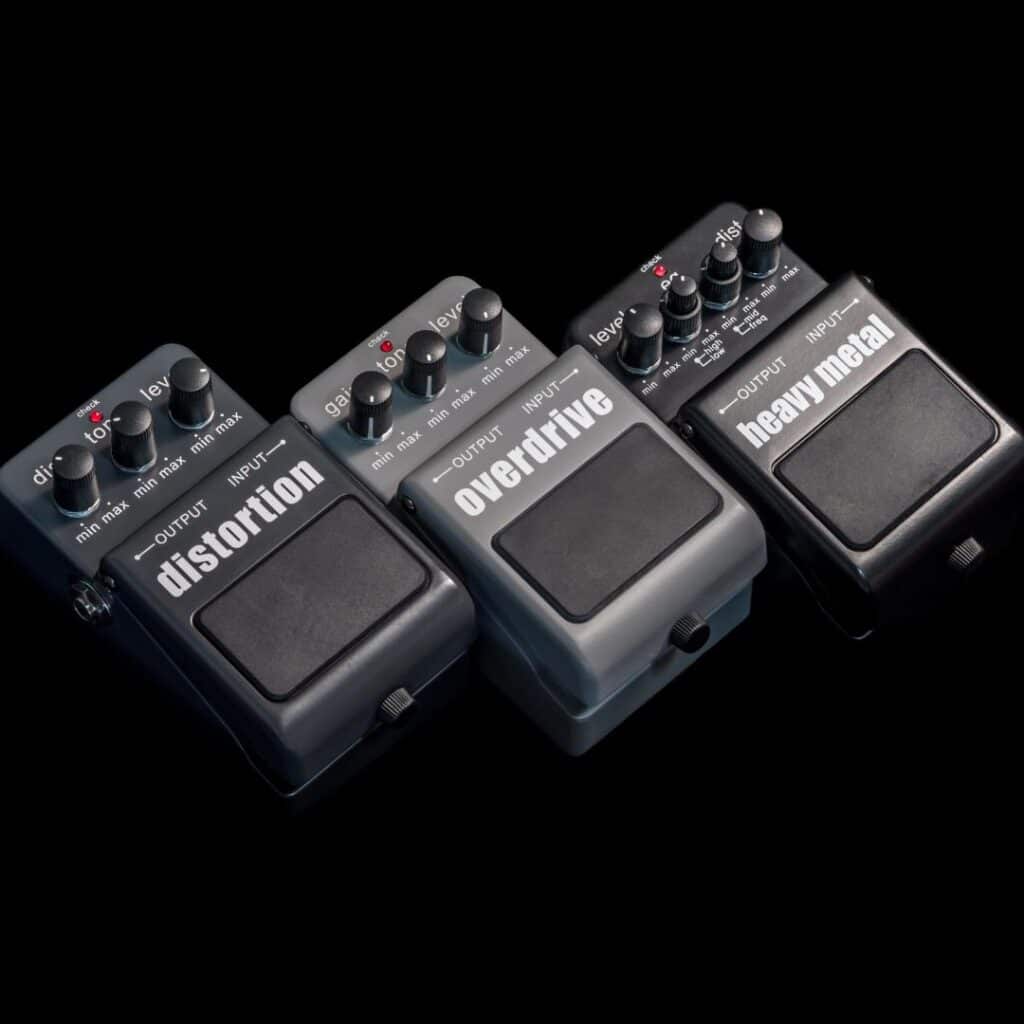
Overdrive Pedals
a. What are they?
Overdrive pedals emulate the natural, warm distortion that occurs when a tube amplifier is pushed to its limits. They add harmonic richness and sustain to your guitar tone, making it sound thicker and more dynamic.
b. When to use them?
Use overdrive pedals to add warmth and depth to your clean tone, or to push an already distorted amp even further. Popular examples include the Ibanez Tube Screamer and the Boss Blues Driver.
Distortion Pedals
a. What are they?
Distortion pedals create a more aggressive, hard-edged clipping than overdrive pedals. They provide a wide range of gain settings, from classic rock crunch to modern metal mayhem.
b. When to use them?
Distortion pedals are perfect for creating powerful, soaring leads and chunky rhythm tones. Some well-known examples are the Boss DS-1 and the Pro Co RAT.
Fuzz Pedals
a. What are they?
Fuzz pedals deliver a heavily saturated, almost synth-like tone by aggressively clipping the guitar signal. They’re responsible for some of the most iconic guitar sounds in history.
b. When to use them?
Fuzz pedals are great for psychedelic, garage, and vintage rock tones. Classic examples include the Electro-Harmonix Big Muff Pi and the Dunlop Fuzz Face.
Delay Pedals
a. What are they?
Delay pedals create echoes of your guitar signal, adding depth and space to your sound. They can be used for subtle ambiance or for creating complex, cascading layers.
b. When to use them?
Use delay pedals to add texture and atmosphere to your playing, or to create rhythmic patterns and ambient soundscapes. Popular examples are the Boss DD Series and the MXR Carbon Copy.
Reverb Pedals
a. What are they?
Reverb pedals simulate the sound of your guitar bouncing off the walls of a room or hall, adding a sense of space and depth to your tone. They can create everything from subtle reflections to lush, cavernous echoes.
b. When to use them?
Reverb pedals are perfect for adding ambiance and a sense of space to your sound, from surf rock to shoegaze. Some well-known examples are the Electro-Harmonix Holy Grail and the Strymon BigSky.
Chorus Pedals
a. What are they?
Chorus pedals create a lush, shimmering effect by doubling your guitar signal and slightly detuning the duplicate. This results in a sound reminiscent of multiple guitars playing simultaneously.
b. When to use them?
Chorus pedals can be used to add a sense of depth and dimension to your clean tones or to create dreamy, ethereal textures. Classic examples include the Boss CE-2 and the MXR M234 Analog Chorus.
Phaser Pedals
a. What are they?
Phaser pedals create a sweeping, whooshing effect by modulating the phase of your guitar signal. The resulting sound has a rich, otherworldly quality that can add movement and depth to your tone.
b. When to use them?
Phaser pedals are great for adding a psychedelic vibe to your sound, or for creating subtle movement in clean and overdriven tones. Popular examples include the MXR Phase 90 and the Electro-Harmonix Small Stone.
Flanger Pedals
a. What are they?
Flanger pedals create a dramatic, jet-like swooshing effect by combining the original guitar signal with a slightly delayed, modulated version of itself. This results in a distinctive, swirling sound.
b. When to use them?
Flanger pedals can be used to create a sense of movement and depth in your playing or to add a spacey, futuristic vibe to your sound. Classic examples include the Electro-Harmonix Electric Mistress and the Boss BF-2.
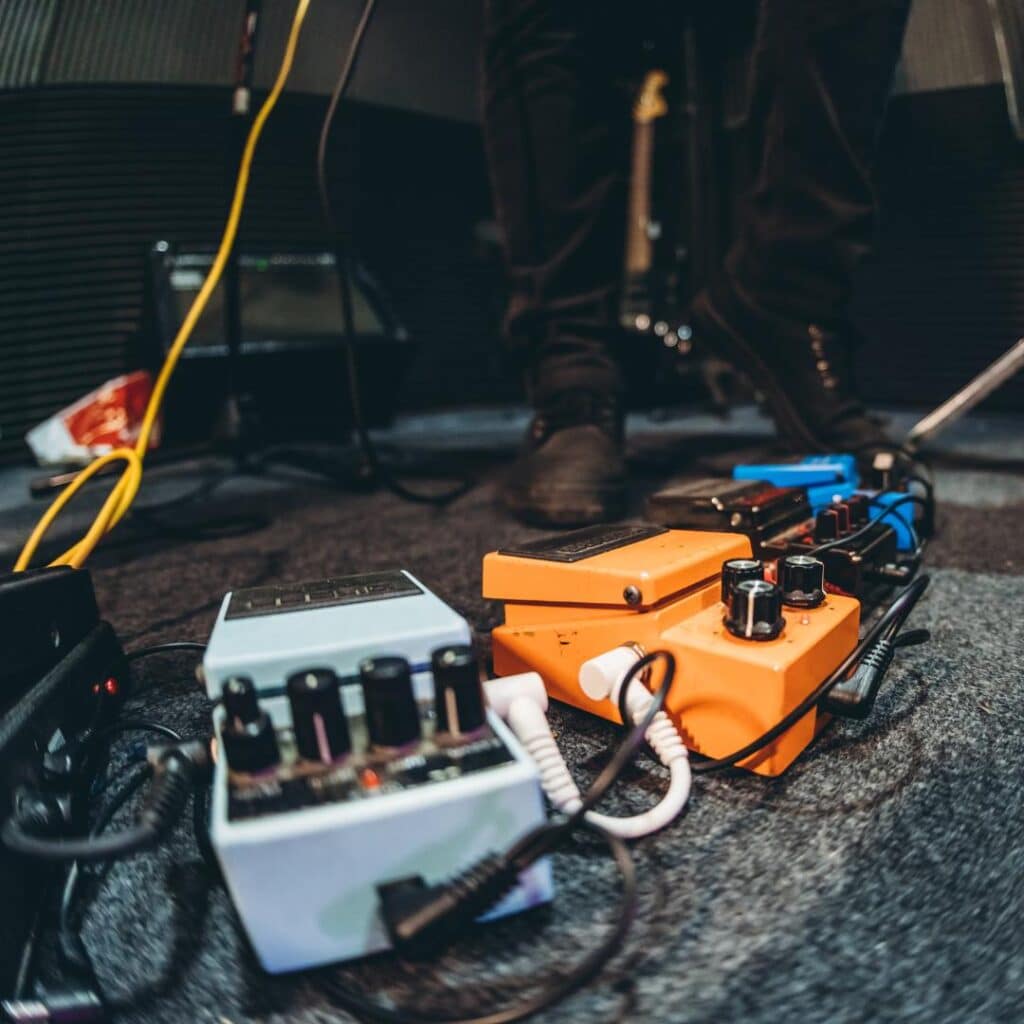
Tremolo Pedals
a. What are they?
Tremolo pedals create a pulsating effect by rhythmically modulating the volume of your guitar signal. This can range from a subtle shimmer to a dramatic, stuttering effect.
b. When to use them?
Tremolo pedals are perfect for adding a vintage vibe to your sound or for creating rhythmic patterns and textures. Popular examples include the Fender Tre-Verb and the Fulltone Supa-Trem.
Wah Pedals
a. What are they?
Wah pedals are expressive, foot-operated filters that create a distinctive, vocal-like sweep by altering the frequency response of your guitar signal. They can be used to add a touch of funk or to emphasize certain notes in a solo.
b. When to use them?
Wah pedals are ideal for adding expression and character to your playing, especially during solos or funky rhythm parts. Classic examples include the Dunlop Cry Baby and the Vox V847.
Compressor Pedals
a. What are they?
Compressor pedals help control the dynamics of your guitar signal by evening out the volume of your playing. They can add sustain, improve clarity, and tighten up your overall sound.
b. When to use them?
Compressor pedals are great for enhancing clean tones, adding sustain to solos, or keeping fingerpicking and percussive techniques under control. Well-known examples include the Keeley Compressor Plus and the MXR Dyna Comp.
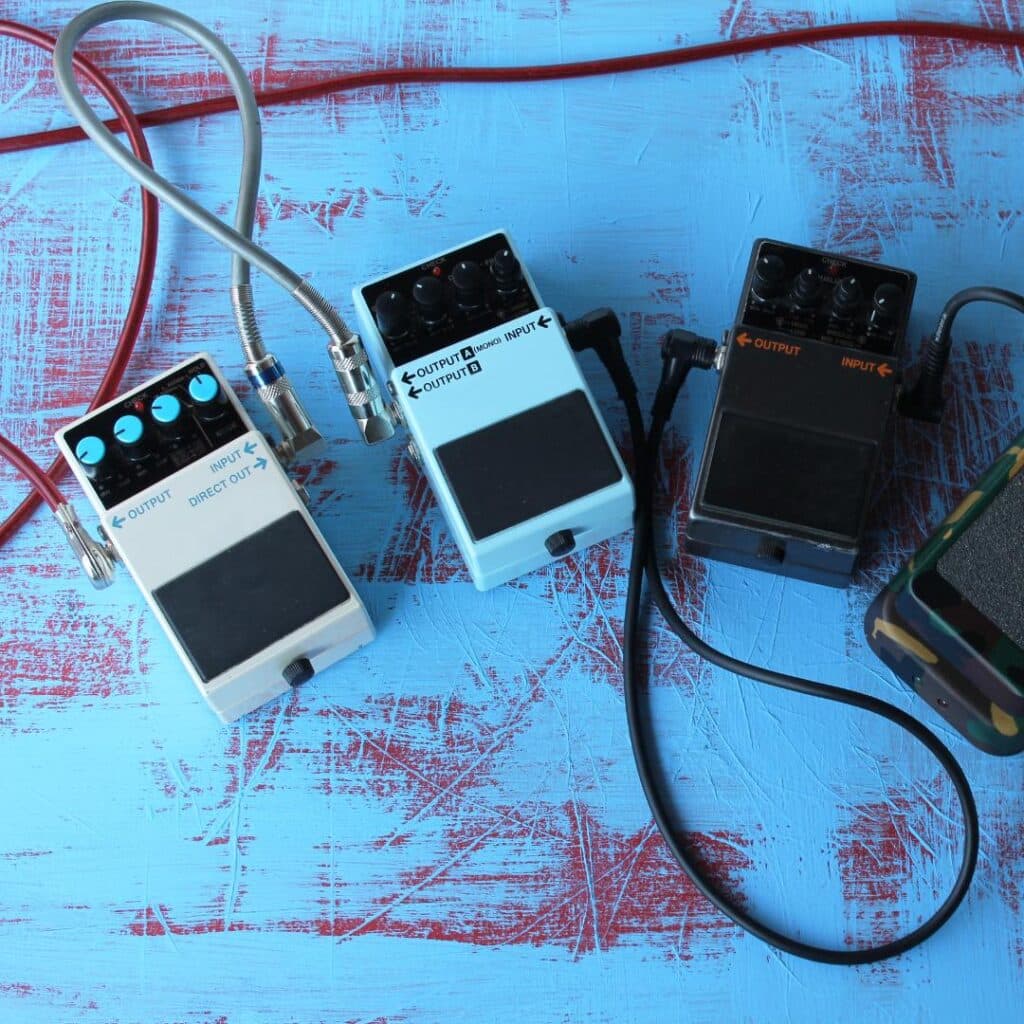
What’s Next?
And there you have it! We’ve explored the most common types of guitar pedals, their uses, and some popular examples. With this newfound knowledge, you’re now better equipped to choose the perfect pedal to shape your guitar tone and elevate your playing.
Remember, the key is to experiment with different effects and combinations to find your unique sound. These days it could be easier than ever to do so as you can use simulated pedal sounds on your PC. Now go out there, stomp on those pedals, and make some musical magic! 🎸🌟
